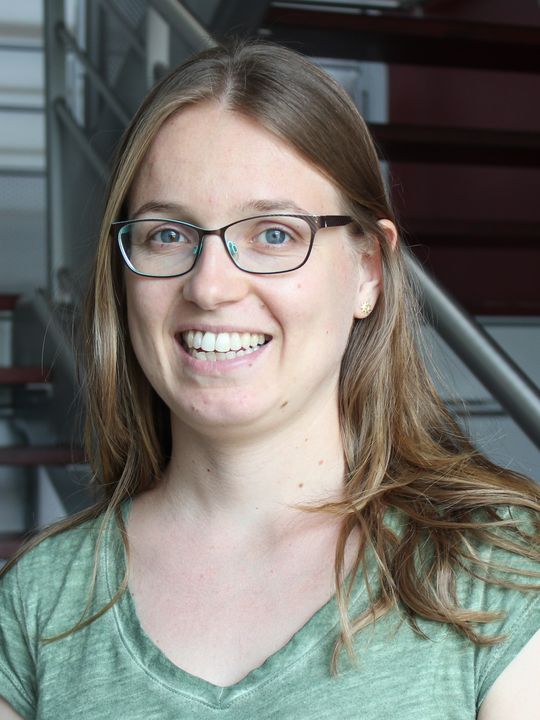Why not simply make do with macroscopic descriptions of physical phenomena, since they have already been established and validated?
My purpose is scientific: to understand the world around us better by investigating the infinitely small. It’s a field where there’s still a lot of work to be done. As early as 1822 the mathematician Joseph Fourier defined the heat equation, which describes heat conduction in a room where a radiator is in use, for example. But 200 years later, no one can describe in great detail how hot air molecules circulate.
In the long term, we can imagine applications for this knowledge. Once we understand precisely how air molecules move within a hurricane, it will be possible to predict their path and avoid alerting millions of people, as was the case in Florida with hurricane Dorian in 2019. But we still have a long way to go.
Isn’t computer science better suited than mathematics for a topic like this?
The phenomena I study involve billions of billions of interacting particles. No computer is able to handle such complex problems. We have to rely on math to model the phenomena at the microscopic scale, then prove that this model corresponds with the macroscopic reality we’re familiar with.
But I use computer science too. Working with molecular simulation experts, we develop our own models, which are simplified compared to reality so that they are executable, and the simulations tell us whether or not they are consistent. For that, computers can be much faster than verifying by hand.
What physical phenomena do you model?
Right now, I’m studying phenomena that present “mobile interfaces,” meaning a separation between two environments that changes with time. Examples might be an ice cube melting in water, a fluid flow in a porous medium, hot air in a cold room etc. These phenomena are described at the macroscopic scale by what are known as “partial differential equations.” To verify that my microscopic models satisfy these equations, I have to prove theorems called “hydrodynamic limits.”
This work is carried out within my Inria team and in collaboration with mathematics and theoretical physics researchers, based mainly in Paris and Lyon, but also in Italy, Germany and Portugal.
How is your approach different from that of other specialists who model microscopic phenomena?
My models take variability into account: my ice cube may melt more quickly on one side than another; the water particle flowing in a porous medium may move left or right at any time. That makes it complicated to describe the systems I study. But the other side of that is that I can rely on probability theory, which provides powerful mathematical tools that are also used in finance, biology and epidemiology. To put it another way, I’ve chosen a rockier path but I’m better equipped as I set out.
A significant finding from your research?
In 2018, I published an article on heat conduction inside a nanotube, an object whose inside diameter does not exceed a millionth of a millimeter. In this situation, the Fourier heat equation no longer applies: atoms in the air move according to different dynamics, which I described and validated together with my collaborators. What’s true in 3D, in a room, for example, is no longer true inside a nanotube which can be considered a 1D object.
You’re a mathematics researcher, first and foremost. Why did you choose to work at Inria?
When I was studying math at Normale Sup Lyon, I chose to specialize in probability theory. And the Paradyse team was seeking precisely this skill when it hired me in 2016. And, as I said earlier, I have the opportunity to work with digital simulation researchers.
For me, Inria has been a springboard and an accelerator. In 2019 I was the winner of the French National Research Agency’s Young Researcher program, which will award me a four-year grant. Just recently, I’ve completed my habilitation thesis, which will allow me to supervise a PhD student and a postdoctoral researcher who will work with me.
What would you say to young women considering a career in digital technology?
Go for it! Don’t give up because you’re afraid or because people tell you that it’s a career for men. Come visit labs, talk to researchers and if it’s the right path for you, then keep going! I find it appalling that there are so many girls who study science in high school but so few female scientists. As for me, I’ve never had a moment of regret about choosing this career.
*Paradyse is a joint research team with Inria and the Paul Painlevé laboratory (CNRS and Université de Lille)
Marielle Simon, Inria researcher, at a glance
• 2011: Agrégation (competitive exam for high-level teaching) in Mathematics
• 2011 – 2014: PhD in mathematics
• 2014 – 2015: Post-Doctorate in Rio de Janeiro (Brazil)
• 2016: Researcher at the Inria Lille – Nord Europe Centre
• 2019: Habilitation thesis (HDR), winner of the ANR Young Researcher program
